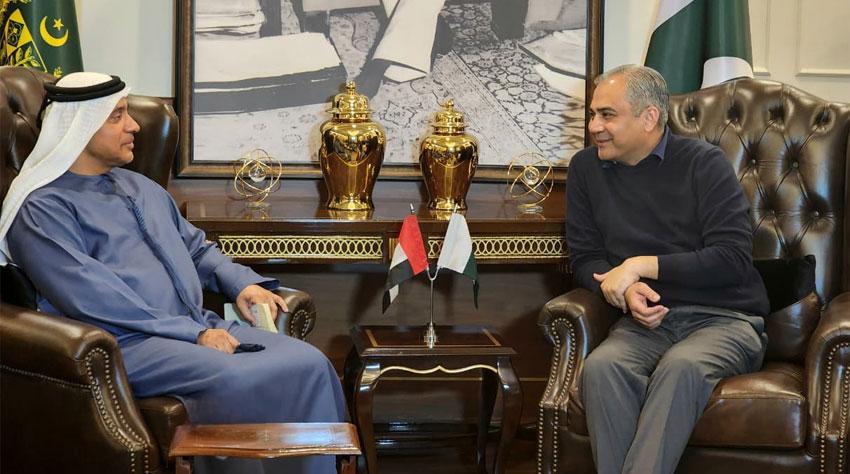Cyclone Freddy destroyed the small East African country. Targeted climate reparations can help alleviate recovery — and poverty.


This story is part of a Vox series examining how the climate crisis is impacting communities around the world, as the 28th annual United Nations conference on climate change (COP28) unfolds.
For several days in March, the record-breaking Tropical Cyclone Freddy poured heavy rains onto the city of Blantyre in Malawi, a country in southeastern Africa no bigger than Pennsylvania. Freddy roared in the Indian Ocean for over a month, longer than any other recorded tropical cyclone, while also becoming the most energetic storm in the planet’s recorded history. The cyclone displaced over half a million and killed more than 1,400 people across Malawi, making it one of the deadliest in Africa’s history.
Christina Mphepo, a 42-year-old mother living in an affected neighborhood at the foot of Mount Soche in southern Malawi, barely got out alive on March 13 when a mudslide unleashed a river of sludge and boulders into the village. The day of the landslide, Mphepo was washing clothes when she heard the rumble above — and then the shouting. After realizing she couldn’t make it to her house in time, she ran to shelter in a nearby home. Soon, a landslide struck, crumbling the house with mud and stones. Seven women died from the impact of the slide as Mphehpo narrowly escaped with her life. When she fled to another house, a giant rock killed the man who had helped her.
“I escaped death twice,” she said in Chichewa through a translator. She frantically scurried uphill to avoid another rainstorm hurtling the neighborhood’s way. “I thought the world was ending.”
Mphepo told me she’s still struggling, nine months after the disaster. Every day, she climbs up the steep mountain behind the village to illegally cut down trees to sell firewood, risking a beating or a fine from authorities if she’s caught. “When I’m chased off the mountain, that means my family cannot eat or my kids cannot go to school that day,” said Mphepo, whose attire was donated to her after the storm, including a pink patterned scarf she wore on her head. “This is how I survive.”
Ironically, deforestation caused in part by such illegal tree clearing had worsened the mudslide. The loss of tree roots eroded the soil, weakening its ability to retain water. This is a dilemma nations across the Global South face: To make a living, or simply survive, people cut down trees, but doing so makes their communities more vulnerable to the extreme weather events that climate change is intensifying.
Malawi loses an estimated 33,000 hectares of forest a year — that’s enough to cover over 61,000 American football fields. This loss is, in part, due to people like Mphepo who cut down trees to sell: 97 percent of the population relies on biomass — mainly wood — for cooking and heating. There are stands everywhere in Blantyre selling firewood or the charcoal locals convert it into when they bury it underground with leaves and a soft fire.
The 28th annual UN climate negotiations (COP28) are wrapping up this week, and after decades of agonizing inaction, policymakers have finally passed a possible solution to this dilemma: a bucket of money wealthy countries pay into that lower-income countries can pull from when they need financial assistance after or in preparation for climate-fueled disasters. Formally known as loss and damage, this fund will act as an insurance policy of sorts to keep countries from going broke amid the rising cost of emergencies.
The justice of such a fund isn’t hard to see. After all, it is chiefly developed nations like the US and UK that have heated the planet with their industrialization — not developing countries like Malawi, where only 11 percent of the general population has access to electricity.
This $656 million fund could offer a lifeline to communities like Blantyre that urgently need resources to rebuild homes, restore forests and farm soil, or even relocate entirely in the face of climate disasters. And access to such money could help prevent the worst of those catastrophes by addressing deforestation’s true root cause in Malawi: poverty.
If officials were to use the funds to build programs that financially reward restoring forests or leaving them alone, communities could find a new source of income and develop stronger protections from future storms. Plus, everyone wins when soils and flora are healthy enough to store some of the carbon dioxide that’s driving climate change in the first place.
“Loss and damage has to look at how livelihoods and the welfare of the people have been affected,” said Sosten Chiotha, regional program director for Leadership for Environment and Development Southern and Eastern Africa, a Malawi-based community-focused research organization. “In the long term, you have to look at the infrastructure that has been damaged: the roads, the hospitals, the schools.”
At COP28, world leaders agreed to house the fund in the World Bank, which will have four years to meet its mandate of assisting countries in need. However, the World Bank wasn’t the first choice for vulnerable nations that worry the bank will charge hefty fees for its hosting duties or struggle to issue funds directly.
The process to formalize the fund has been long and tense, but many negotiators representing developing nations have been fighting to ensure their constituents will have easy access to money when a crisis unfolds, as well as to plan for disasters that happen over time such as erosion due to sea level rise or desertification. Whether countries prioritize locally led adaptation will determine how much families on the ground feel the fund’s impact, explained Nisha Krishnan, the Africa climate director for the World Resources Institute, a global nonprofit that studies climate and energy.
“How are communities included in this?” she said. “There is evidence also showing that the more communities are included and empowered, the longer you have more sustainable impact and outcomes for whatever intervention you do.”
:no_upscale()/cdn.vox-cdn.com/uploads/chorus_asset/file/25153117/1252309055.jpg)
These concerns are why the policy- and research-focused International Institute for Environment and Development (IIED) has advocated for the fund to use grants that can quickly reach local grassroots groups rather than dollars that trickle down slowly from government or institutions that decide where they go. The World Bank is now challenged with exploring how to make something like this possible.
“We want to make sure it’s effective and fit for purpose and does not just replicate business-as-usual models of finance,” said Nora Nisi, a climate change researcher with IIED who co-authored a May 2023 paper arguing that loss and damage should cover biodiversity loss, such as deforestation.
For her part, Mphepo welcomes financial assistance from the countries that created climate change, but she doesn’t want to see world leaders build a fund that only sends money to government officials. Last year, Malawi’s vice president was arrested for allegedly taking private money and gifts. In 2013, Malawi President Joyce Banda was forced to fire her entire cabinet in the aftermath of a corruption scandal that involved officials stealing an estimated $100 million to buy cars and estates.
“I don’t trust the government,” Mphepo said. “The money will come, but it won’t reach us.”
She’d much rather see help go directly to community groups based in Blantyre — like the Better World Charitable Organization run by Tamara Nyahoda. Nyahoda has been helping women like Mphepo set up small farming businesses with donations she receives from friends, contacts, or even her own wallet. That way, they can stop cutting down trees to sell for firewood or charcoal. Nyahoda has lived in the community for 20 years. Her work in emergency response kicked off after learning how to offer mental health resources, something her neighbors need more of in light of Cyclone Freddy. The amount of money her organization handles is pennies compared to the potential millions of a loss and damage fund, but survivors feel the benefits immediately.
Money can’t solve everything, but it can do a lot. A loss and damage fund may help Mphepo and her children move somewhere new. She doesn’t feel safe anymore in her neighborhood, which remains covered in monstrous boulders and the skeletons of former homes. Brown and gray grime splotch the walls of houses still standing. What’s most glaring is the landslide’s scar. It cuts through the middle of Soche and, in some areas, runs several feet deep. Inside, foundations are still protruding from the dirt, as are isolated tree roots left abandoned by their trunks.
Climate change is increasing the intensity of extreme storms. And Mphepo knows it’s only a matter of time until the rains explode the mountain into a deadly mix of mud and rocks again.
“With climate change, I know this place is risky,” she said. “A long time ago, it wasn’t like this. I wish the government could move us somewhere safer.”
Funding for travel expenses was provided by the Meliore Foundation.

Pakistan vs Sri Lanka: A thrilling contest showcases competitive cricket
- 15 hours ago

PM Shebaz directs strategy for profitable commercial use of Pakistan Railways
- 18 hours ago

Bangladesh Cricket Board removes Finance Chairman over controversial statements
- 15 hours ago
How to watch 2026 PGA Sony Open on ESPN
- 3 hours ago

Shehbaz Sharif inaugurates Pakistan Assan Khidmat Markaz
- 18 hours ago
Shelton shakes off 'rust,' reaches Auckland QFs
- 16 hours ago
TGL best moments: Fowler, New York beats Jupiter Links
- 16 hours ago

PM Shehbaz Sharif Reaffirms Commitment to "One China" Policy in Meeting with Chinese vice minister
- 13 hours ago

The Trump administration can’t stop winking at white nationalists
- 2 hours ago

The Stream Deck Plus is back to its lowest price
- 4 hours ago

BMW says electric M3 will be a ‘new level’ of performance
- 4 hours ago
Raducanu overcomes delay, wins Hobart match
- 16 hours ago











